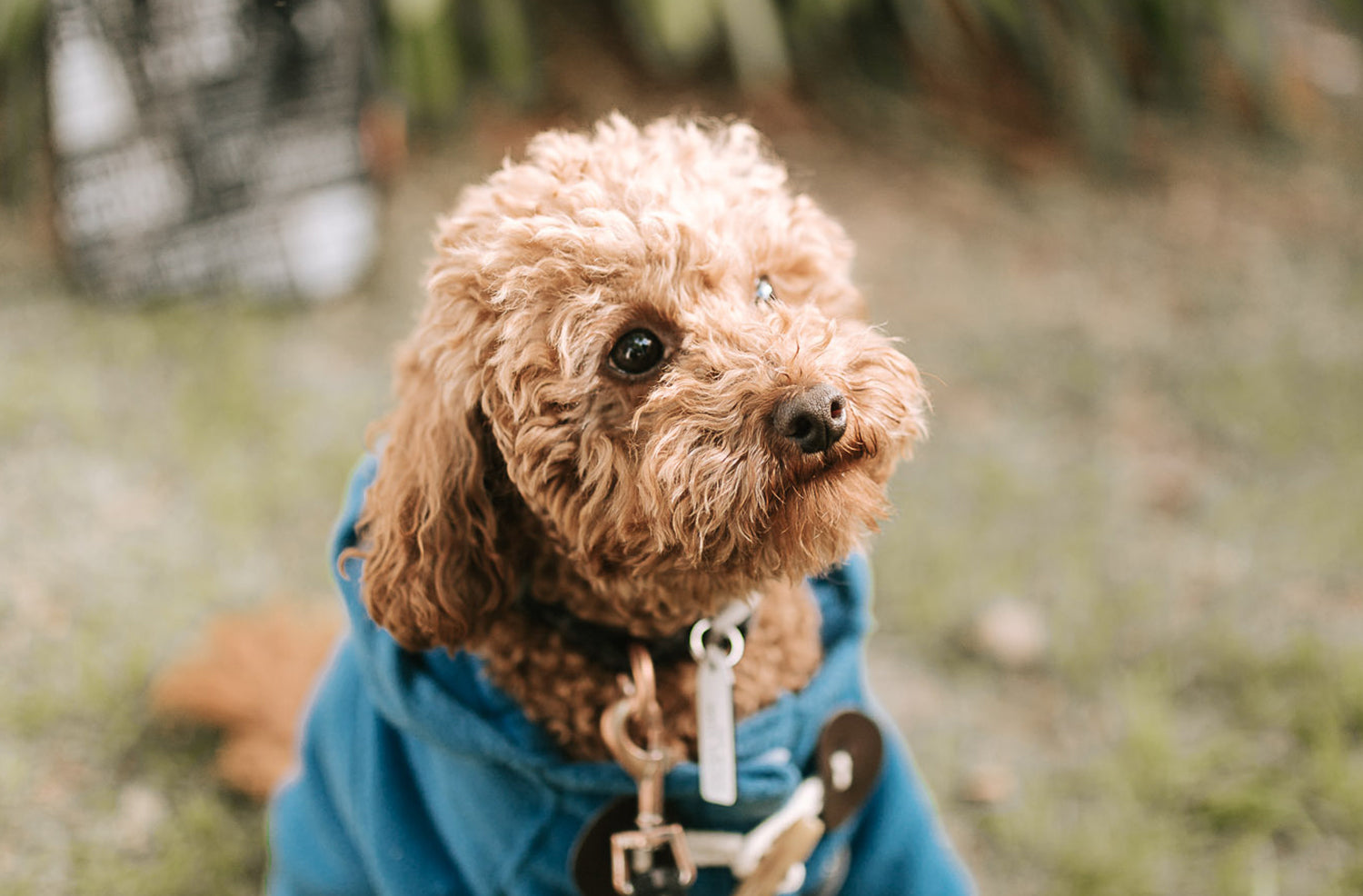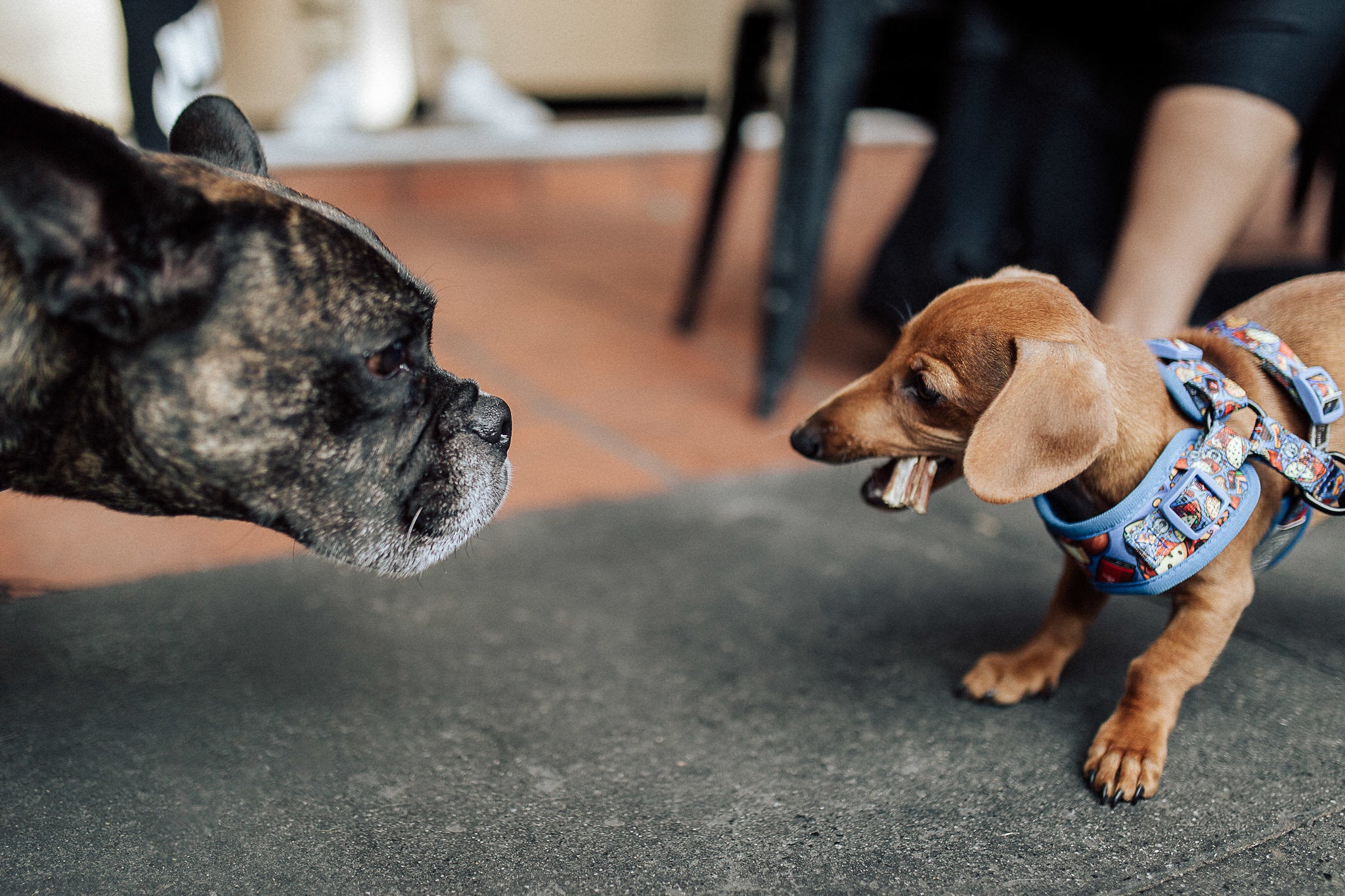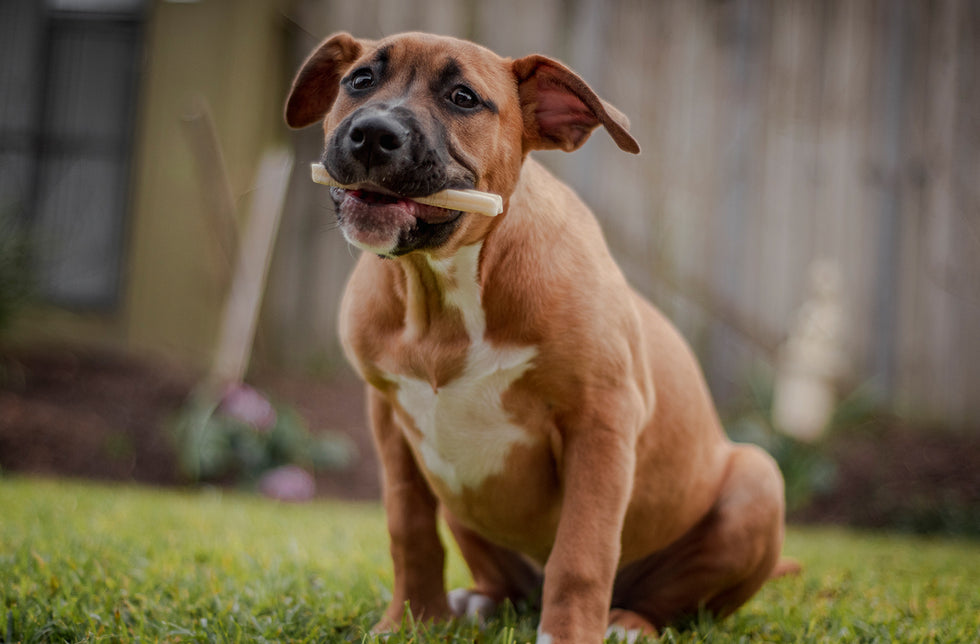What Are Normal Puppy Behaviours? Our Comprehensive Guide to Training Your New Puppy

Puppies are known to be full of energy, playful and mischievous. However, many new pet parents find themselves wondering if the behaviour their puppy is exhibiting is normal and will pass, or is a sign of potentially destructive behaviour or bad habits down the track.
If you're planning on welcoming a furry friend into your family, it's important you know how to train them. As well as highlighting some normal puppy behaviour and destructive behaviours to keep an eye on, we'll cover some puppy training tips to help you shape your new little furry friend into a model citizen.
Normal puppy behaviour
Puppies, in general, are balls of energy and playfulness. They may be cheeky and push boundaries, and they definitely offer some laughs with their funny behaviour and short attention spans. Some destructive puppy behaviours are common, but with correct training, they shouldn't be carried on into adulthood.
Here are some typical puppy behaviours:
- Mouthing and/or chewing: Puppies go through periods of teething just like babies, and puppies may try to chew things (including their owner's hands!) to try to relieve their sore gums.
- Jumping: To show excitement or get attention.
- High energy: Depending on the breed of your puppy, you may find it hard to expel all their energy in the early days, at least until they've had all their vaccinations and you can take them out for a walk.
- Yapping or barking: Common reasons for barking include playing, fear or anxiety, trying to get your attention or territorial behaviour.
- Toileting inside: In the early days, it's likely your puppy isn't doing it deliberately. They may still be learning!

Key puppy training tips
It's important to work to correct undesirable puppy behaviours at this young stage, so that they don't develop and carry the habit into adulthood. Setting boundaries and being firm with sticking to them will ensure your puppy understands what is right and wrong. That being said, make sure you're patient with both your pup and yourself. Training is hard work, and you both need to work together.
Puppies have notoriously short attention spans. To get the most out of training, ensure you stick to short training sessions. This will ensure you keep your pups attention, and they will actually retain the training.
Positive reinforcement will do more for training your dog than punishment ever will. Offer positive reinforcement when your pup exhibits the good behaviour you are trying to teach them. Harsh punishments can cause fear and aggression in dogs, and punishments don't actually teach the dog what you want them to do. Reward-based training works by encouraging positive behaviours with a treat, attention, praise or affection.
Whenever you are about to begin a training session, it's important the dog knows to enter training mode. It's a good idea to consider dedicating a particular space to training (e.g. one room in the house), as well as putting the pup on a lead for training. This way they'll start to associate that room and the lead with training time, and be more likely to get into the zone.
Basic obedience training
Remember the goal is to use reward-based training to encourage good behaviours in your dog, rather than using punishment to discourage unwanted behaviours.
Basic obedience training can be started as soon as you bring your new puppy home. The best time to start is when the puppy is still young, although young puppies have very short attention spans so remember to be patient.
Make sure everyone in the household uses the same basic commands so your dog doesn't get confused. Use simple words for commands, such as 'sit', 'heel', or 'stay'.

How to train a puppy to walk on a lead
To start with, it's a good idea to let your pup wear their collar for a few minutes at a time so they grow used to it.
Once you have attached the lead (to their collar or harness), allow your dog to guide you around the backyard. Keep the lead slack between you, rather than allowing tension to pull.
Have the lead on for only a few minutes at a time to start, and over time, they will grow used to it. Reward them for remaining calm without tugging on the lead or trying to bite it. Then you can start adding different commands (such as 'sit' or 'stay') during lead training.
How to train a puppy to be alone
Part of puppy raising is teaching your puppy how to be alone. Even if you're often home, there will always be times where your pup is by themselves, and you want to avoid this causing a lot of anxiety for your dog, and keep them from acting out or destroying things.
Start small. Have your dog sit and stay while you move a few steps away. Reward them for sitting still and remaining calm. Progressively increase the distance you go, until you can leave to another room or go outside while they remain calm. Start with small intervals away from them, and reward them for good behaviour - but don't make your return too exciting, or you can build up too much anticipation for your return.
Crate training is often a useful tool for teaching puppy how to be alone. Crate training, if done correctly, teaches a pooch how to be happy, calm and safe in their own space, which can be useful when dog owners have to go out. You can also utilise a baby gate, which can be temporarily installed in any doorway. The laundry is always a safe option (just keep those cleaning products away from puppy’s reach!).
Always start off with shorter bursts of alone time. It is always a good idea to leave your puppy along for an hour while you do your grocery shopping, before leaving them alone for the full day while you go to work.

How to stop a puppy from nipping
Nipping is completely normal in young puppies, but should be discouraged or it can become an unwanted behaviour later in your dog's life.
Offer a chew toy in one hand, and pet your dog with the other hand. If your pup still tries to nip you, stop petting them and stop offering them attention. Ignore your puppy until they are calm, and try again with the chew toy. This will show the dog that they don't get attention when nipping.
How to burn puppy energy indoors
When you welcome your puppy into their new home, they may be awaiting their vaccinations before they can go for walks. All that puppy energy needs to be spent somehow - but there are plenty of great ways to get your puppy used to their new environments at home and in the backyard while burning off their energy. This is also a special time to spend with your dog and ensure you build a strong bond.
- Rotate through their new toys
- Give them things they can chew on, such as chew toys or bully bites
- Learn new commands and tricks - training is hard work, and will wear them out quickly! Make sure to keep some chicken jerky on hand.
- Scavenger hunts (with food or toys)
- Interactive toys that offer a reward, such as a kong
How to stop puppy yapping
Yapping or barking is one of those bad habits that can be tricky to break. Positive reinforcement is useful for curbing yapping over time. When your pooch is quiet, offer them a small treat to reward this good behaviour. If your puppy barks or yaps, ignore them. Puppies will often bark for attention, and when it doesn't work in gaining attention from you they will (hopefully!) learn that it's not the way to go.
Puppy classes
Getting started on basic obedience commands early on is a good idea to ensure your dog has a solid foundation for creating good habits. If you want some extra support or socialisation for your puppy, try puppy classes. These training classes can be useful in getting some more puppy training tips and support from a dog trainer to help in training your dog.

Treats your puppy will love
Your puppy deserves nothing but the best treats for all their hard work with learning their new tricks and basic commands. Here at WAG we have a range of natural puppy dog treats specifically designed for puppies and training in our WAG Puppy Pack. Browse our range online now!
Shop the Recipe
WAG Team
Up Next
Why Is Gut Health For Dogs Important?




